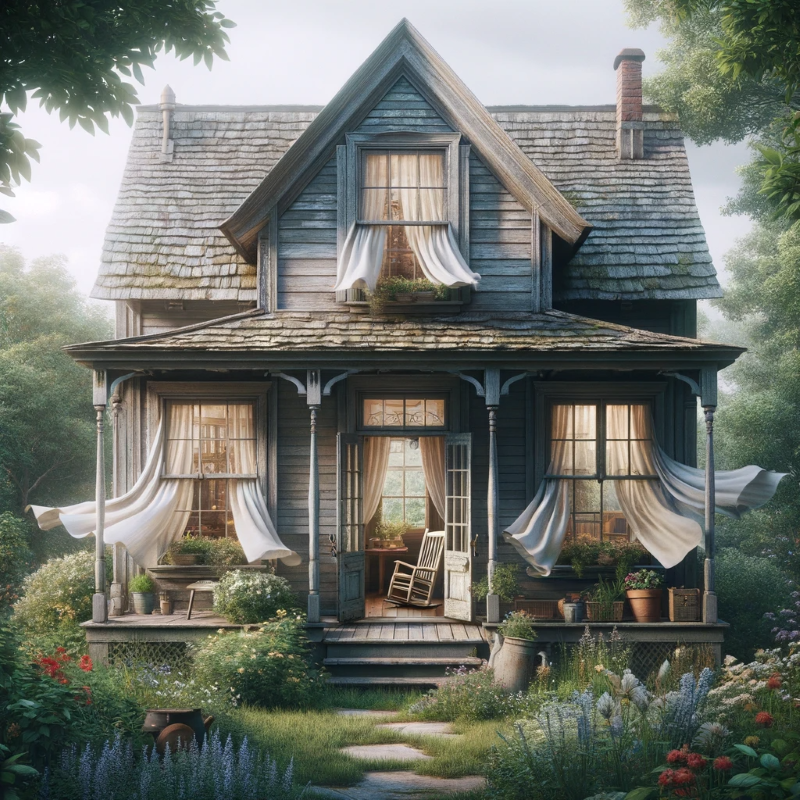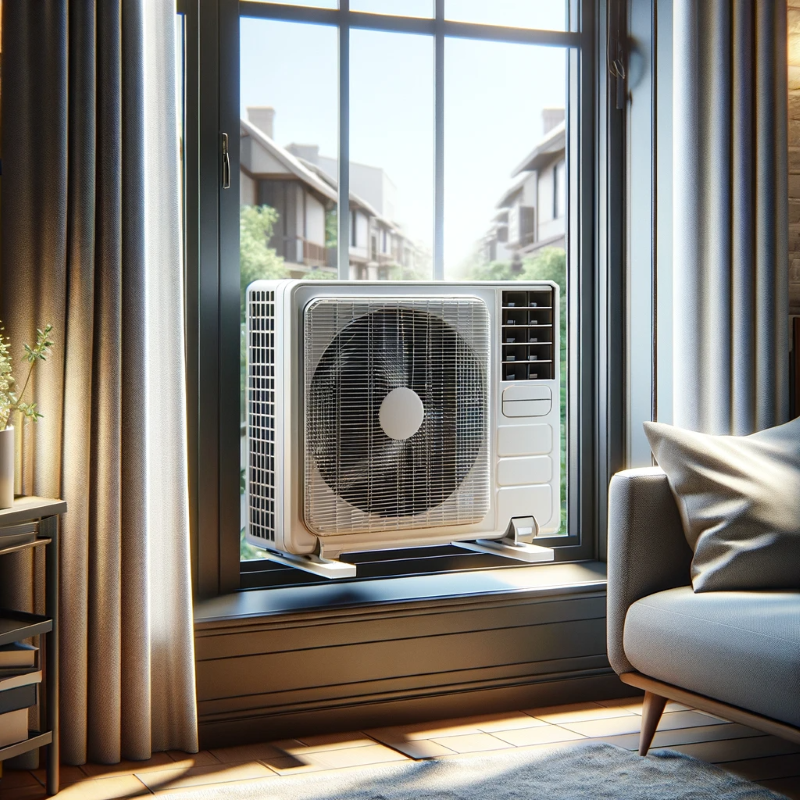Can You Install Central Air in an Old House?
Living in an older home has certain charms that homeowners living in newly constructed properties will rarely experience. There’s a sense of class and elegance, even nostalgia, that makes your older home feel like more of a treasure than a simple place to live.
But living in an older home does have its challenges. Old houses need more regular maintenance and general upkeep than newer houses. Plus, they often need massive renovations just to keep them livable.
One of the major updates many older properties need is a new central air conditioning system. However, some properties are so old (or uniquely designed) that homeowners are uncertain if a central heating and cooling system would work in their houses.
In this post, we’ll explore the challenges an older house faces when it comes to central heating and cooling. Then, we’ll show you how you can keep your home comfortable year-round – no matter its age!
Will Central Air Work in My Old House?
Your main question right now is whether or not your old home can handle a central air conditioning system. The answer to that question is yes – with some stipulations.
If your older home has pre-existing ductwork, you’re in luck. Those ducts, likely used in the distant past as heating ducts, can be used for air conditioning with minimal upgrade costs. Installing central AC in your home should be as simple as plugging up the new system – as long as your ducts don’t need significant repair.
However, there are quite a few additional points to consider when it comes to your home’s HVAC system. Depending on how large or small your home is, when and how it was built, and the existing power supply options on your property, you may have a few choices to make regarding which system you end up with.
How Much Cool Air Will I Need?
Before you can get started installing central AC, you need to figure out the cooling capacity and efficiency of the system in question. Your HVAC contractor should be able to perform a load analysis and consider the specifics of your home’s construction. This will include the square footage of each cooled room in your house, surface areas of your outside walls, window glazing, air filtration, insulation work, and more.
Larger AC Systems
You must purchase an air conditioning system that will deliver cool air to every important spot in your home while maintaining energy efficiency. If it’s too large, it’ll cool your indoor air environment too quickly, reducing the unit’s ability to circulate air and minimize humidity. Keeping humidity out of older homes is extremely important – both for their residents and for the health of the structure itself.
Smaller AC Systems
But if the central air conditioner is too small, it’ll have to run round-the-clock to get the job done. This leads to a far higher energy bill at the end of each month.
Get with your local air conditioning contractors and figure out exactly how large or small a central air conditioner you’ll need before you ever make a purchase or schedule a central air installation.
Will I Need Central Air Ductwork?
If you don’t have existing ducts in your home, it’s fully possible to have new ducts installed for your air conditioning needs. However, this depends on the characteristics of your older home’s design. Lots of old houses have plaster walls and intricate finishes which necessitate tons of cleanup and artistry to restore fully.
When AC contractors run into these issues, they’ll often look to closets or gaps in floors and ceilings to run new ductwork. But sometimes, older homes are built in such a way that adding ductwork is next to impossible.
When You Can’t Install New Ducts
If there’s no realistic way to add ducts to your entire house, ductless air conditioning is a great option – especially if your home is historic or you detest the idea of multiple window units. Ductless systems, known as mini-split systems, have several benefits for owners of older homes.
Mini Split Systems
With mini split systems for your air conditioning needs, you can cool each room’s temperature separately and customize the comfort level of each room. These ductless cooling systems are also more energy efficient than other systems because of their automatically adjusting condenser units.
A mini-split system has two main components – the outdoor compressor/condenser and the indoor evaporator. These ductless system components are simple for contractors to install and only require a 3-inch hole through your home’s wall for the conduit, which houses the power and communication cables as well as the condensate drain line.
Mini Split System Downsides
The only real downside to a ductless mini-split system is the price tag. While they aren’t as expensive as installing ducts for a central cooling and heating system, installing one is still a considerable investment. This is especially the case when installing a higher-end split system for conditioning multiple rooms. Still, if you have an older home and want to cool it at optimal efficiency without installing bulky ductwork, a split system might just be your best option.
High-Velocity Systems
Another new AC unit option many homeowners choose for their indoor air handler is a high-velocity system. High-velocity systems utilize 2-inch insulated tubing to deliver chilled air throughout the home.
The line of tubing is inserted in existing walls and ceilings to private climate control anywhere it’s needed in the entire home. These systems are ideal for homeowners who want the least obtrusive AC systems possible.
Can My Home Power the Central Air Conditioning System?
If you’ve found the ideal type of HVAC system for your home, the next thing to consider is whether or not your home can keep it running. Many older homes are limited to 110-volt, 60-amp power throughout the home. These homes struggle to power most modern appliances and need an upgrade to have a new central AC system installed.
Modern central air conditioners need at least a dedicated 230-volt circuit and up to 50 amps of power for themselves. That means you’ll need an upgrade to your home’s electrical service long before you ever install central AC.
What’s the Installation Cost for Central Air in an Older Home?
The cost of installing central air comes down to the square footage you’re trying to cool. If you need to cool a 2,000 sq. ft. home, you can expect installation costs of around $3,500. This can be handled quickly and professionally by two technicians in just a few days.
However, if you have a very different type of property – one with adjoining structures (add-ons, etc.) your installation costs may vary. It’s best to get with your local HVAC team ahead of time to plan out the process and see what your air conditioning options may be, both for energy efficiency and affordability.
Are Window Units Energy Efficient?
Some homeowners with older homes consider other air conditioning options for their heating and cooling needs. One of the most common you’ll see around the country are window units.
These clunky air conditioner boxes are far easier and more affordable to install than mini split systems, a fan and coil system, or other climate control options. That’s because all you need is a window and an electrical outlet to get them started.
However, they are nowhere near as energy efficient as a full home central air conditioner. This is because you’ll need more than one of these to cool your home – and sometimes, you’ll need two or three in the same (larger) indoor area to keep it cool during the hottest months of the year.
When Window Units Work Best
If your goal is to only cool a single room in your older home, a window air conditioner or fan and coil system will be a more affordable and efficient option. Some homeowners find them unsightly or cheap looking – but today, there are myriad options for window units in sleeker, less conspicuous designs.
Installing Central Air Conditioners in Older Homes
Just because you live in an old house doesn’t mean you can’t stay just as comfortable as people living in brand-new structures. As you can see from the systems we’ve described, you have plenty of options when it comes to keeping your older house cool during the hottest months of the year.
Looking to add air conditioning to your older home? If you’d like to find the ideal solution for your property, an experienced HVAC tech can provide great solutions for:
· installing ductwork
· Use your traditional ductwork
· Installing a ductless mini-split system
· Keeping your energy bills as low as possible
· Ensuring a low security risk for your property
· Analyzing the total cost of the renovations and installation
· walking you through the entire process
Contact an HVAC Pro This Cooling Season
As we move into July, we’re already in the middle of the blazing heat of the summer. If you own one of these old houses, you know how important getting conditioned air into every corner can be for your comfort.



